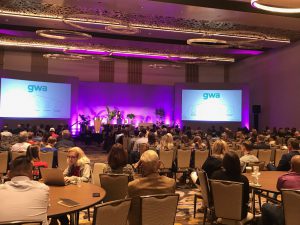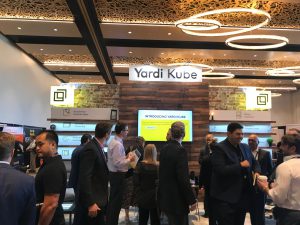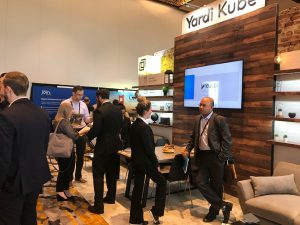Share This
Related Posts
Tags
2019 GWA Recap
By Luis Estrada on Sep 27, 2019 in Events, News
The 2019 GWA Conference, held this earlier this month in Washington, D.C., examined the latest trends in coworking. Yardi Kube was once again a platinum sponsor of this well-attended event, demonstrating a commitment to the  coworking industry and showcasing new updates to the comprehensive coworking management platform.
coworking industry and showcasing new updates to the comprehensive coworking management platform.
Let’s recap some of the highlights from conference breakout sessions. (Stay tuned for Part Two of this report, with additional insights.)
Positioning your coworking space
Led by Kevin Whelan, founder of Everspaces, this session was a discussion about customer purchases and what coworking operators can do to position themselves for quick success.
Whelan explained that people, in general, buy on convenience or fidelity. Convenience is the purchase that’s based on how easily you can get something. Price, flexibility, and other ease of access factors play into these decisions. Fidelity is all about the experience. Customers will purchase things they truly love (think iPhones), irrespective of price. These purchases are based on status, visibility, elite design and service.
Successful coworking operators must define themselves to attract members looking to purchase based on one of the two categories. For example, NeueHouse prides itself on providing a world class experience in Manhattan, NY and Hollywood, Calif. As a result, their pricing is considered among the highest in the industry. Nevertheless, NeueHouse is very successful.
Regus, an industry leader, does not provide a ‘wow’ experience. But the company operates numerous coworking locations in major cities, so ease of access and flexibility when traveling is high. Regus price points are considered affordable. Both NeueHouse and Regus are profitable industry leaders in their own categories.
Even niche spaces like The Wing, a women’s only coworking space, also operates a magazine, podcast, and retail store, among other ventures. But The Wing’s owners successfully use these mediums based on the needs and demands of their  members.
members.
Whelan suggested that coworking providers study and survey their members. Identify a core group of dedicated members for insights into their likes and dislikes. The results can help determine future business positioning.
How to land more members
Sean Eikerman of Cultivate Advisors laid out a foundation for how to increase coworking signups. Starting with a detailed description of a tour he received as a visitor to a coworking space, he explained what makes the biggest difference between wanting or not wanting to sign up for a given space.
Giving a tour with great attention to detail and showing every corner of a space is great, but the focus should be on the visitor, their needs/wants, and creating a personal relationship.
Assess the visitor with a conversation of at least five minutes before the tour. The more personal information, the more personal the tour experience. Eikerman also explained RAMTAN, his own spin on how to best get to a closed deal, which begins with building a rapport with a visitor, and includes several steps some operators often skip, like a trial close.
Interactive best practices
One of the final sessions on the first day of GWA opened up the floor to crowd sourced questions and comments on best practices. Kris Elliot, COO of Novel Coworking, led the discussion. Some of the questions/ideas that stood out:
Learn from your team: Scott Chambers of Pacific Workplaces shared that his entire staff gets together once a year for a full day of recapping what they’ve done well,  not so well, and best strategies for moving forward. He’s always open about company plans and future initiatives and believes caring about staff is equally as important as caring for members.
not so well, and best strategies for moving forward. He’s always open about company plans and future initiatives and believes caring about staff is equally as important as caring for members.
Do you use background screenings for prospective members? Most operators answered that they did not, opting instead to have a very detailed terms and conditions contract for members. While it’s not common to have to remove a member based on these terms, it’s good to have a specific list of unacceptable actions that will result in removing the member.
How do you sell virtual offices? Yes, it can be a slow process to start seeing results. But the average virtual member stays for about 18-24 months, longer than the physical member. The key to selling anything virtual, whether it’s a desk, a mailbox or a video conference service, is to always mention it – on every tour, at each event, to every prospect. Include it in all marketing materials, such as social media, newsletters or any communication with members and prospects. Also, do not push aggressively to convert someone interested in a virtual space to a physical one. If they want to upgrade, they will.
That’s a wrap for some of the highlights of day one at GWA. Find the Day Two recap here.
